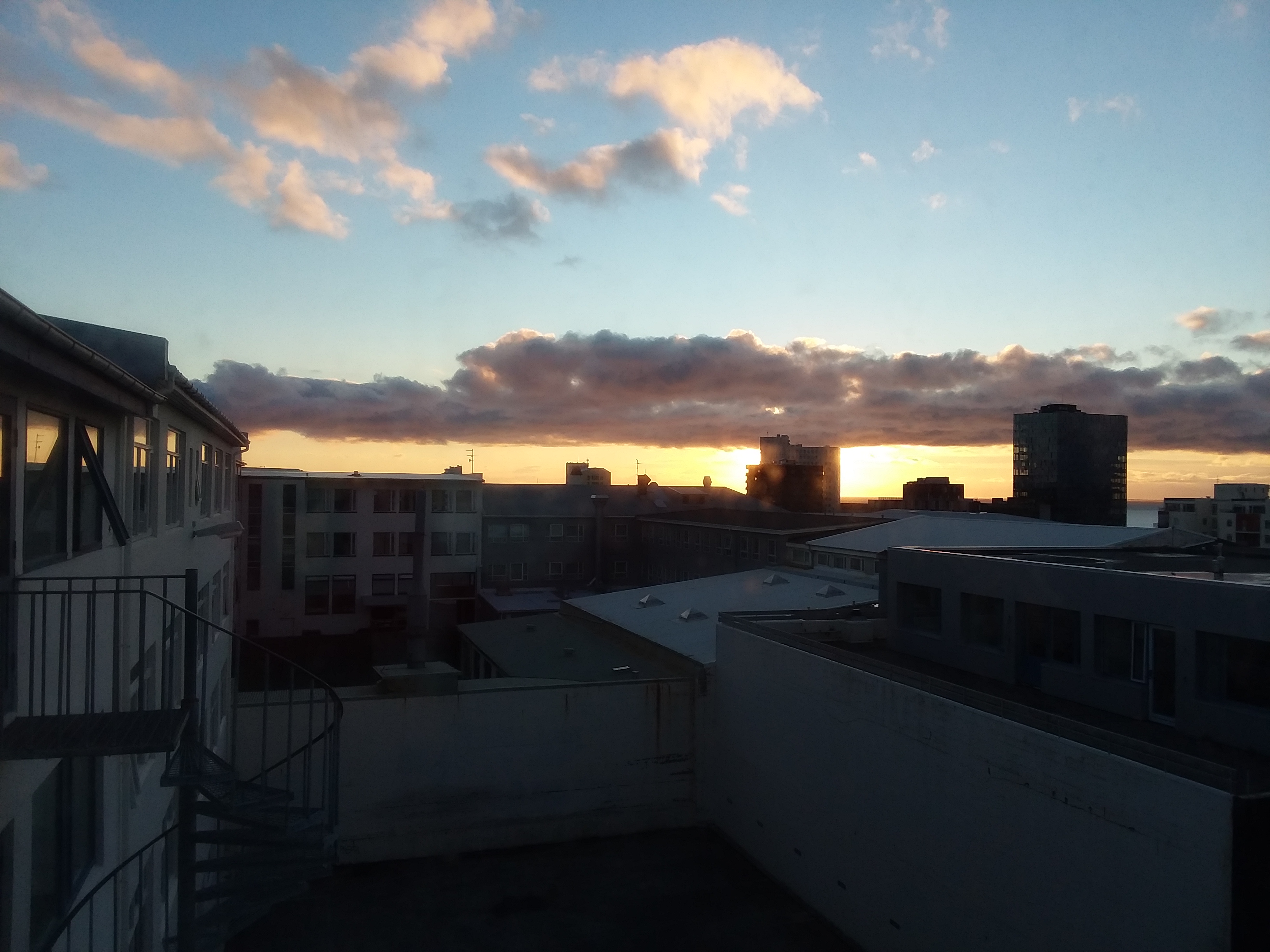I recently returned from a vacation in Iceland. I spent a week just south of the Arctic Circle, one week after the summer solstice.
There’s a lot to talk about following such an amazing trip (and I will), but having recently written about dark skies, I thought a lot about the almost-24-hour daylight we experienced so near the top of the world, so I’d like to muse on that a bit.
Logically, the geometry of the situation – a spherical Earth rotating on a tilted axis – is pretty easy to visualize. Light up half a globe and you can see why the poles are unique. But this was my first time this far north, and actually experiencing it made me think a lot about the strangeness of the light and dark extremes at high latitudes.
At lower latitudes, the Sun arcs high above, sets with purpose, and disappears for a while. Night falls. All very normal – it’s as if the Sun is on a giant hula hoop held more-or-less vertically (an up-and-down circle), and you’re standing in the middle of it.
As you go north, you follow the curve of the Earth. “Up” is still away from the ground, of course, but on a global scale, and in relation to the disk of the Solar System and the Sun itself, this direction rotates by the number of degrees you’re changing in latitude. The effect is to rotate the solar hoop toward horizontal.
At high latitudes, following the hula hoop, the Sun doesn’t go “up” anymore, but rises going mostly sideways. At high noon, the Sun is in the south, and not nearly as high as you expect it to be. It keeps flying sideways through the sky, gradually lowering moving well on past west to kiss the horizon and set in the NORTH. (Not due north, still slightly west, but much closer to north than west). During our stay, this sort-of-sunset happened at about 11:45 pm.

Reykjavik, Iceland 11:30pm, July 4, 2019
Imagine this time and place – midnight just south of the Arctic Cricle – and then look back at the globe. A point on the Arctic Circle at sunset, at the solstice, is at the very top of the world. The tilt of the Earth makes this the “high” point, the point where the Sun doesn’t set, but just kisses the horizon and rises again. The North Pole is well away from the top, 23.5 degrees down the side of this marble and pointing dramatically toward the Sun.
From Iceland, you’re just barely over the top on the night side. This means that “night” doesn’t happen because the Sun is on the other side of the Earth, it’s because it’s north of you, up toward the pole — and not by much, just a tiny little bit! All you need to do is peek over the top of the world and you’ll see the Sun again. This blows my mind a little.

Midnight in Iceland near the summer solstice. Notice how, even in the middle of the night, Iceland is closer to the terminator (Day/Night line) than the Eastern US, despite being 5 hours ahead. And the twilight on the horizon from nearby daylight is in the “wrong” direction – the closest path to sunlight is due north!!
And indeed, the Sun didn’t go far. It flattened out just barely below the horizon and shuffled through due north to rise again, still well north of the easterly direction we’d expect, at just before 3am. In between, bright twilight. Bright enough the streetlights don’t come on. We never saw a star.
We weren’t there for winter (obviously), but as I think about the opposite situation, where the Sun just barely rises for a couple hours, I can’t help but think about the stars, and the fact that from up there, you see the same domed ceiling, the same group of stars, just going around and around.
At mid-latitudes, we get to see the night sky change throughout the year. We see a different sky every night as constellations slowly walk to the west. Near the pole, you see the same set of stars going around the pole, all the time. Not only can you not see very far south of the equator, those constellations we associate with changing seasons aren’t visible from the pole, because the night sky only ever exists in one direction through the solar system. The Sun is in the sky, obliterating the stars whenever you’re facing the other way. We don’t have that problem in the mid-latitudes, as we have a distinct night in which we can look away from the Sun at all points in our orbit.
The Moon, though – in a polar winter, the full Moon would barely set, and you could almost see the Moon nonstop for weeks, changing phase but only barely setting!
This fascinates me… and at least folks in these latitudes have the Northern Lights to make up for this lack of variation.
I can’t wait to visit in winter, both for the Northern Lights and to experience the rotating dome of night. The difference from home really lights my imagination in a way I didn’t anticipate it would!
Get Out There!
Troy

The tilt is the key. I was pretty old before any of this sunk in. I only recently began exploring the notion of the international date line, speaking longitudinally.
LikeLike
That was a very enjoyable read, Now I want to go. Thanks!
War Eagle
LikeLike
Thanks for the lesson. It was good.
LikeLike